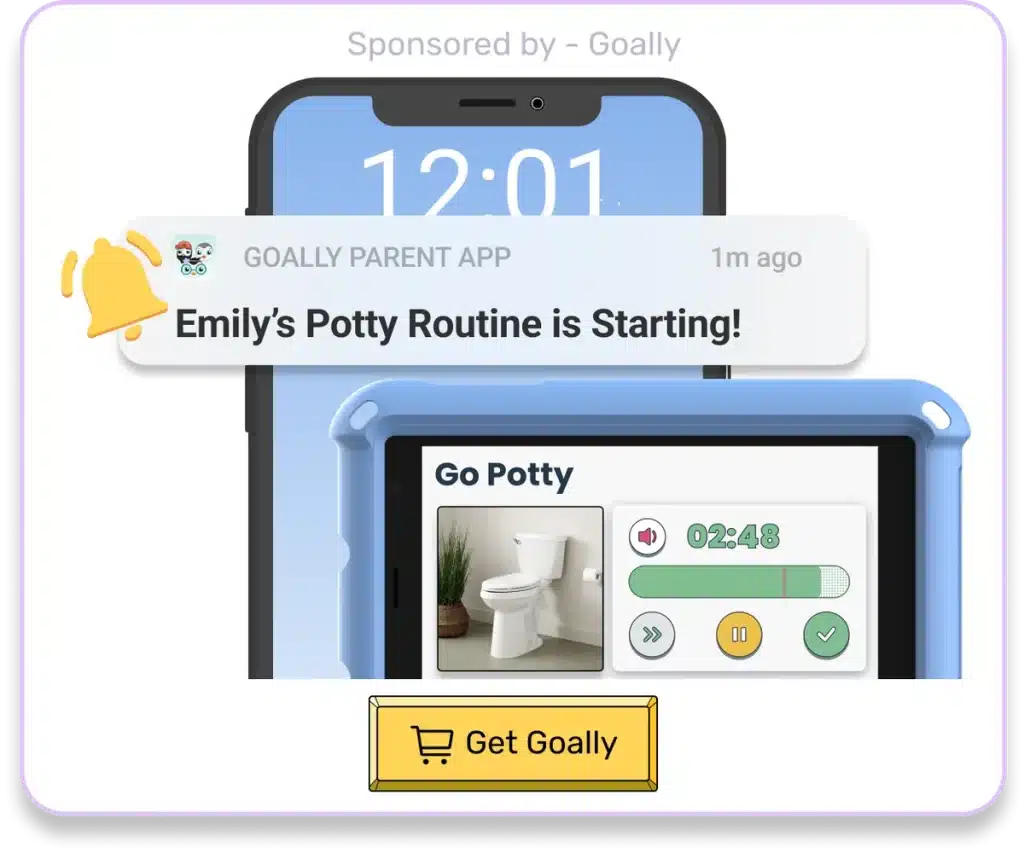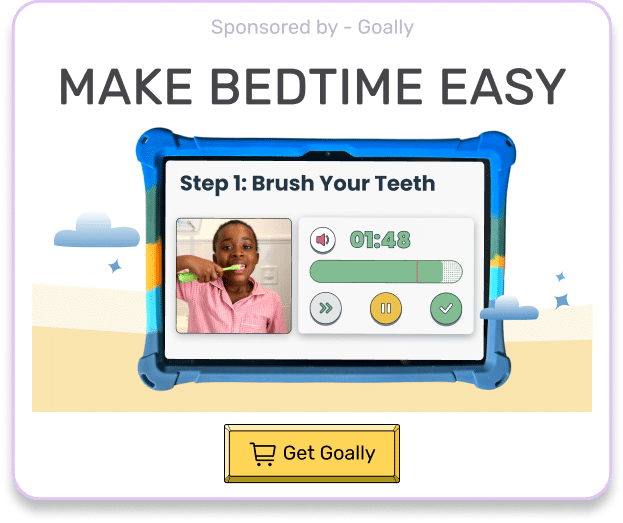Did you know that at least 80% of kids face obstacles while potty training that hinders their progress? Many parents may fear that their child is falling behind when in reality, it is common for young ones to struggle with this process. Children who are neurodiverse tend to face more challenges, especially those who are non-verbal. Obstacles can look like anything from a child’s fear to sit on the toilet, to an inability to recognize the need to use the bathroom. Here are some tips that will help you create the best system for potty training your child. You will also find free printable potty training visual schedule cue cards (at the end of this article) to support your little one’s journey!
Table of Contents
Knowing When It’s Time to Potty Train
The most important step in potty training children is determining when to begin. According to John’s Hopkins, there is no specific age where every child is ready to start using the toilet. While the average moment for children to begin is 27 months, each child is different. What’s more important than your child’s age is whether or not they are showing signs of readiness. Here are some questions to ask yourself in order to see if your child is ready:
- Is your child uncomfortable with a soiled diaper?
- Do they verbalize when they’re about to go potty?
- Does your child attempt to copy/mimic what you do?
- Can your child walk comfortably on their own?
Not all children develop at the same rate. It’s important to ensure you do not start the potty training process before your child has grown the ability to control the muscles needed to get themselves to the toilet.
Read More: Potty Training: Is Your Child With Autism Ready?
Goally’s Visual Schedule App Makes Potty Easy
With Goally, you can make your own digital visual schedules–as many as you want! The app provides video modeling, audio cues, and confetti when the action is completed. These features enhance the visual experience your child receives and add to the celebration of their success.
"I got Goally specifically for potty training! After a month, he's trained. He just needs to express he needs to go instead of darting to the toilet ;)" — Goally Mom Learn more →
You can also use Goally to set scheduled reminders to ask if they need to go potty, supporting their adoption of this important habit. If you’re struggling to identify a sustainable reward system, Goally’s app includes targeted games and puzzles that are not only fun and enjoyable for your child, but also support the skills you are working with them to build.
Use Rewards in Your Potty Training Schedule
Once your child is ready to begin their potty training journey, you will want to think of rewards you can give them when they use the toilet properly. You want the rewards to be small and easy, so that you can be consistent. Rewards for using the potty should be given right after your child finishes using the toilet successfully, and you should use a treat that is exclusive to this action. If you are rewarding your child for other behaviors, you will want to choose a different prize for specifically for potty training. Here are some examples to consider:
- Give your child a small, healthy snack (e.g. a couple raisins).
- Let them choose a sticker or child-friendly hand stamp.
- Buy some puzzles and give your child a few pieces at a time.
- Take your child on a walk or read from their favorite book.
You can also use a reward tracking app where you can customize rewards according to a point system, all from the Goally device. This way, your kid can work their way up up to bigger, more exciting prizes each time they use the potty successfully. Whatever reward system you choose, be very diligent for several weeks, until your child begins to adjust. Then, scale back the rewards gradually, making sure not to stop too abruptly.

Read more: Free Printable Behavior Sticker Charts
FREE Printable Potty Training Visual Schedule
Using visual aids will be key in supporting your child’s potty training process. They help to minimize the anxiety your child will face while developing this skill. It’s important to provide visuals for each and every step, not skipping a single aspect:
- Pull down your pants
- Open potty lid
- Get on the potty
- Go potty
- Get two squares of toilet paper
- Wipe with toilet paper until clean and dry
- Put toilet paper in toilet
- Stand up and put on pants
- Close toilet lid
- Flush
- Wash your hands
These highly detailed steps are available with pictures in our free printable potty training visual schedule cue cards provided by Goally. Make sure to post this free visual schedule somewhere within the child’s eyesight in the bathroom. It’s therefore best to laminate or protect the schedules so that your child has the freedom to touch the steps. As well, you and your child can cross them off with a whiteboard marker after completion.
Choose Times for Your Potty Training Schedule
When it comes to potty training neurodiverse children, regularity is key. In addition to being consistent with rewards and using visual schedules, it’s important to establish a few specific times of day to take your child to the bathroom.
Before starting potty training, take some time to observe your child’s bowel movements and urination patterns, and create a schedule based on that. This habit training approach can be incredibly helpful for neurodiverse children who may have trouble recognizing when they need to use the bathroom or expressing their needs to caregivers.
Goally | Routines that Actually Work
Goally’s skill building tablet for kids has routines that break down large tasks into small, achievable steps. It helps kids complete their tasks independently!

Create custom routines with your own videos & pictures for every step. The steps come in small, bite-sized pieces to help your child learn the little fundamentals (like putting the toothpaste on their toothbrush!) to achieve bigger goals. And that’s just the beginning. See it in action:
Start Your Potty Training Visual Schedule
Potty training requires dedication and patience, as well as careful observation. However, using our free printable potty training visual schedule cue cards to support your child’s learning will make it that much smoother. If you want a one-stop support system integrated into your child’s other skills’ training, check out Goally’s various packages and get started today!
This post was originally published on 08/31/2022. It was updated on 06/15/2023.

Goally
We help parents teach their kids life skills, like doing bedtime and morning independently. Backed by science, we incorporate evidence-based practices and expert-informed designs in all of our apps and content.







